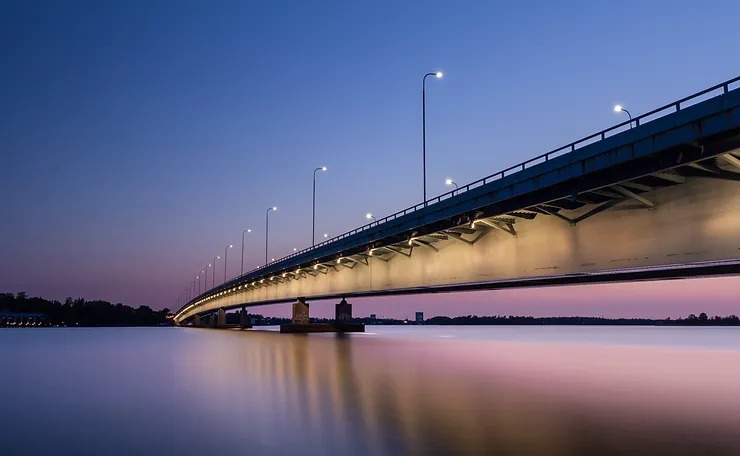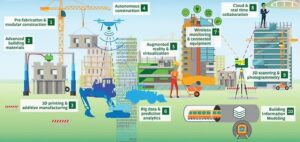An investment deployed in housing, roads, clean water, electricity, ports, airports, rail, and telecom networks, which are the conduits of trade and mobility, is an investment to meet physiological needs.
Infrastructures remain the fundamental facilities and systems required to sustainably support the physiological needs of the current 7.7 billion and the projected human population on earth. To paraphrase the American psychologist, Abraham Maslow, who in 1943 titled a paper “A Theory of Human Motivation,” if written today, he may have stated that “the most basic human survival needs to include nutritious food, clean water, clean energy, sanitation, affordable housing, affordable healthcare, quality education, environmental sustainability, inclusion, industry, and of course reproduction.” Abraham Maslow concluded in his writing that these basic physiological needs must be addressed before humans can move on to the next level of fulfillment. (Hopper, 2020)
“The most basic human survival needs to include nutritious food, clean water, clean energy, sanitation, affordable housing, affordable healthcare, quality education, environmental sustainability, inclusion, industry, and of course reproduction.”
Infrastructure Fuels Economic Growth
Any investment deployed in housing, roads, clean water, electricity, ports, airports, rail, and telecom networks, which are the conduits of trade and mobility, is an investment to meet physiological needs. While infrastructure underpins physiological conditions, it is estimated that one dollar investment in infrastructure can propel economic growth and raise GDP by 20 cents in the long run. These economic benefits arise from reduced travel costs and timesaving, access to reliable electricity, and broadband connectivity that allows individuals and businesses to plug into the digital global economy (Ben Lutkevich, 2020). In addition to the long-term productivity benefits, investments in infrastructure development and construction create jobs immediately.
“Economic benefits arise from reduced travel costs and timesaving, access to reliable electricity, and broadband connectivity that allows individuals and businesses to plug into the digital global economy.”
The nexus of infrastructural development, economic growth, productive investment, job creation, and poverty reduction is well established. (The World Bank, 2019). Over the recent years, developing economies have seen dramatic improvements in transport, power generation capacity, housing, telecommunication, and water infrastructure. The same improved infrastructure has driven growth, reduced poverty, and improved lives.
Increased Demands for Infrastructure
The growing population and continuous demands for economic development are driving countries to channel more funding into infrastructure projects. On average, the world spends 14 percent of global GDP or $9.6 trillion on infrastructure to meet the needs of ageing and new infrastructure projects. Despite the rise in investment, these spending requirements would leave countries facing significant gaps in infrastructure development because they are not enough.
“Some breakthroughs could render some current types of infrastructure obsolete, and they may create entirely new needs.”
Technology innovation is completely changing the estimates of infrastructure usage and investment needs (McKinsey & Company, 2017). Any long-term project will need to put this into consideration. Some breakthroughs could render some current types of infrastructure obsolete, and they may create entirely new needs. Consider the infrastructure requirement of drone deliveries, additive manufacturing technologies; advanced automation; advanced materials, renewable or unconventional energy, and digitization. These challenges and transitions will require considerable investments.
Infrastructure Spending
More than $5.5 trillion additional spending on infrastructure investment per year is required globally between now and 2035, with regional variations. (McKinsey & Company, 2017). Financing the huge investment gaps in Emerging Market Economies, estimated at $1.3 trillion per year, is paramount to meeting the physiological needs of its growing population.
The USA
Consider the two largest world economies; the United States of America’s $2 trillion “Build Back Better” infrastructure plan, which includes massive new infrastructure spending, meant to revolutionize the US’s ageing and neglected infrastructure systems. Even with this amount of investment, there remains $2.8 trillion to bridge the infrastructure investment gap within the USA.
“Financing the huge investment gaps in Emerging Market Economies, estimated at $1.3 trillion per year, is paramount to meeting the physiological needs of its growing population.”- (McKinsey & Company, 2017)
China and BRICS
By international standards, China is seen to have been investing much more in the infrastructure sector starting in 2006 than most of its developing-economy peers. China’s public capital expenditure was estimated to be an average of 13.4 % of GDP ($2 trillion), compared with the average investments in the other BRICS countries of just 3.2% (China, 2018). Yet, China still has an infrastructure investment gap of $1.9 trillion. Again, on the two largest economies, China’s overall national debt was at 270.1 percent of its GDP at the end of 2020; and the Office of Management and Budget in the United States of America recorded a Government Debt to GDP of 128.10 percent of the country’s GDP in 2020.
“China’s overall national debt was at 270.1 percent of its GDP at the end of 2020, and the United States of America recorded a Government Debt to GDP of 128.10 percent of the country’s GDP in 2020.”
Conclusion
The essential roadmap for meeting basic human survival needs is anchored on infrastructure development, yet infrastructure needs exceed traditional funding sources. Again, the conventional sources of financing may even contract further due to reduced fiscal resources, mismanagement, and tighter government regulations. If the humans must survive, new financing sources and models must be developed by relying on digital innovations, digitalization, data generated by the infrastructure that can help build new business models to hedge risk, create efficiencies, enhance new revenue models, and new models for infrastructure funding.
Get in touch with us.
We can help answer more specific questions related to sustainable investments in private equity, credit, project financing, real estate, energy, hospitality, infrafintech, and infrastructure worldwide. Please contact one of our experts below who can answer any queries you may have.

Charles A. Aziegbemhin
Managing General Partner
- +1 416 548 7678 Ext 221
- Send a message
- LinkedIn profile

Fatma Taylan
Managing Partner
- +1 416 548 7678 Ext 221
- Send a message
- LinkedIn profile
Important Information: This communication is marketing material. The views and opinions contained herein are those of the author(s) on this page. They may not necessarily represent views expressed or reflected in other DiliCapital communications, strategies, or investments. This material is intended to be for information purposes only and is not intended as promotional material in any respect. The material is not intended as an offer or solicitation for the purchase or sale of any financial instrument. It is not intended to provide and should not be relied on for investing accounting, legal or tax advice, or investment recommendations.




